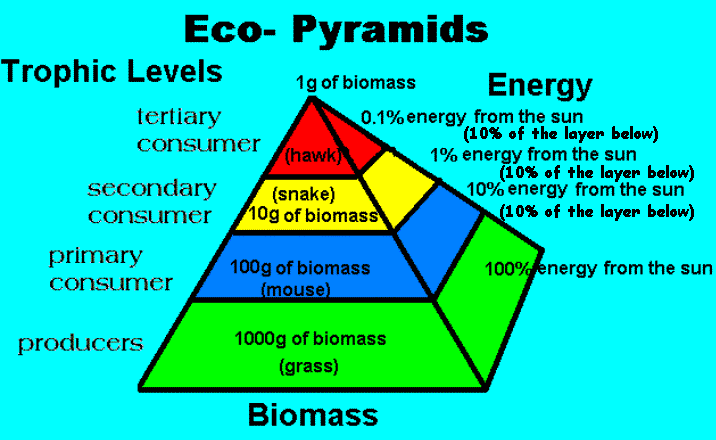What is a trophic level, and what is the 10% rule?
1 Answer
A trophic level is a level that designates organisms that share the same function in a food web in relation to primary sources of energy.
Explanation:
A trophic level is a level that designates organisms that share the same function in a food web in relation to primary sources of energy.
Trophic level one is comprised of primary producers, such as plants or algae that gain their energy from the sun.
Level two includes herbivores, those organisms that consume the primary producers.
Level three includes predators or omnivores, those organisms that consume the herbivores.
Level four includes those carnivores that eat other carnivores.
Level five includes apex predators, or those predators at the very top of the food chain without any organism preying on them.
Consumers generally convert an average of ten percent of the energy from their food source into their own biomass. This is called the ten percent law. The remaining ninety percent is lost or broken down in respiration. This limitation means that food chains or webs don't often reach higher than level four or five.

Check out these related Socratic questions on the energy efficiency of consumers, how producers and consumers relate to trophic levels, and how does energy availability change between trophic levels .

